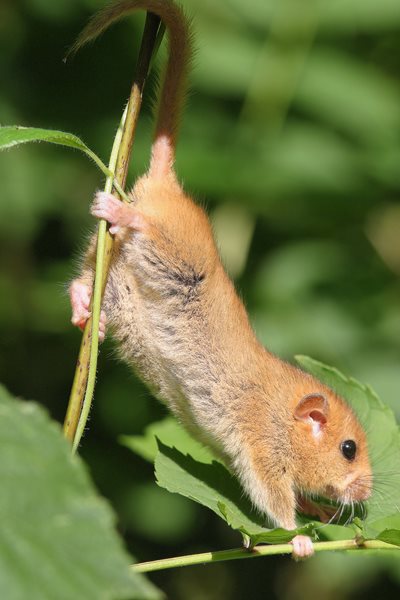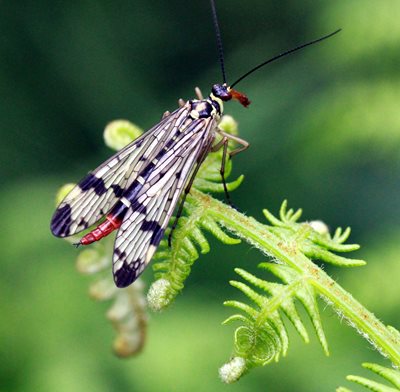Hedgerows are an instantly recognizable and familiar feature of our rural landscape. They provide wildlife with much-needed connectivity across the countryside and, for humans, provide a wealth of ecosystem services such as flood control or mitigation, reduction in soil erosion, and run-off, to name a few.

A dormouse by Ian Pratt
They hold much importance for rural communities, landowners and wildlife but have had a tumultuous past. Following WWII, the intensification of agriculture led to a loss of 50% of hedgerows in some areas of the country. This widespread removal may have had a hand in the decline in species such as dormice, bats, and invertebrates such as scorpion flies which depend on hedges for food and shelter.
It is now realised that hedgerows can have a positive impact on agriculture. They protect crops from wind damage and pests, can increase crop yield by attracting pollinators, act as buffers for soil erosion, and provide shelter for livestock.
These versatile living fences are, perhaps, most importantly, a key piece in the puzzle for wildlife connectivity, making them a major focus of the Claylands Wilder Connections project. Hedgerows are corridors for many species, such as hedgehogs, allowing them safe passage through the countryside. They are also home to more than 30 species of nesting birds and many amazing mammals and insects.
Hedges clearly need our protection, but they can’t be left to their own devices; it’s important that they are properly managed. For farmers and landowners, we recommend using the PTES Healthy Hedgerows lifecycle guide to find out where your hedges are in their life cycle and manage them according to this guidance. A mosaic of hedgerows at different life stages across the landscape is ideal for creating the best habitats and corridors for a multitude of species.

A scorpion fly by Jim Higham
A healthy managed hedgerow can last for at least 40 years before it can be used for wood fuel and rejuvenated by coppicing or re-laying. A few simple tasks which can be performed to make the most out of hedgerows include: planting native trees in gaps, planting new hedgerows (the more, the merrier), cutting hedges as late as possible so as not to disturb nesting birds, allowing enough time for winter berries to grow, and finally, cutting hedgerows every 2-3 years, so there is plenty of food and shelter growing for wildlife. Cutting less often will also save money!
These are just a few suggestions. To learn more about managing hedges, visit PTES and their hedgerow guides at
Hedge management (ptes.org).
If you aren’t a farmer or landowner and want to do your bit to help out our hedgerows, with the help of local communities and volunteers, the Claylands Project has helped plant over 8000 native hedgerow plants and trees, and there’s no stopping us yet! Check out our Eventbrite (
Norfolk Wildlife Trust Events | Eventbrite) page to get involved; we have lots planned for the next few months.
Header image by Ross Hoddinott/2020VISION